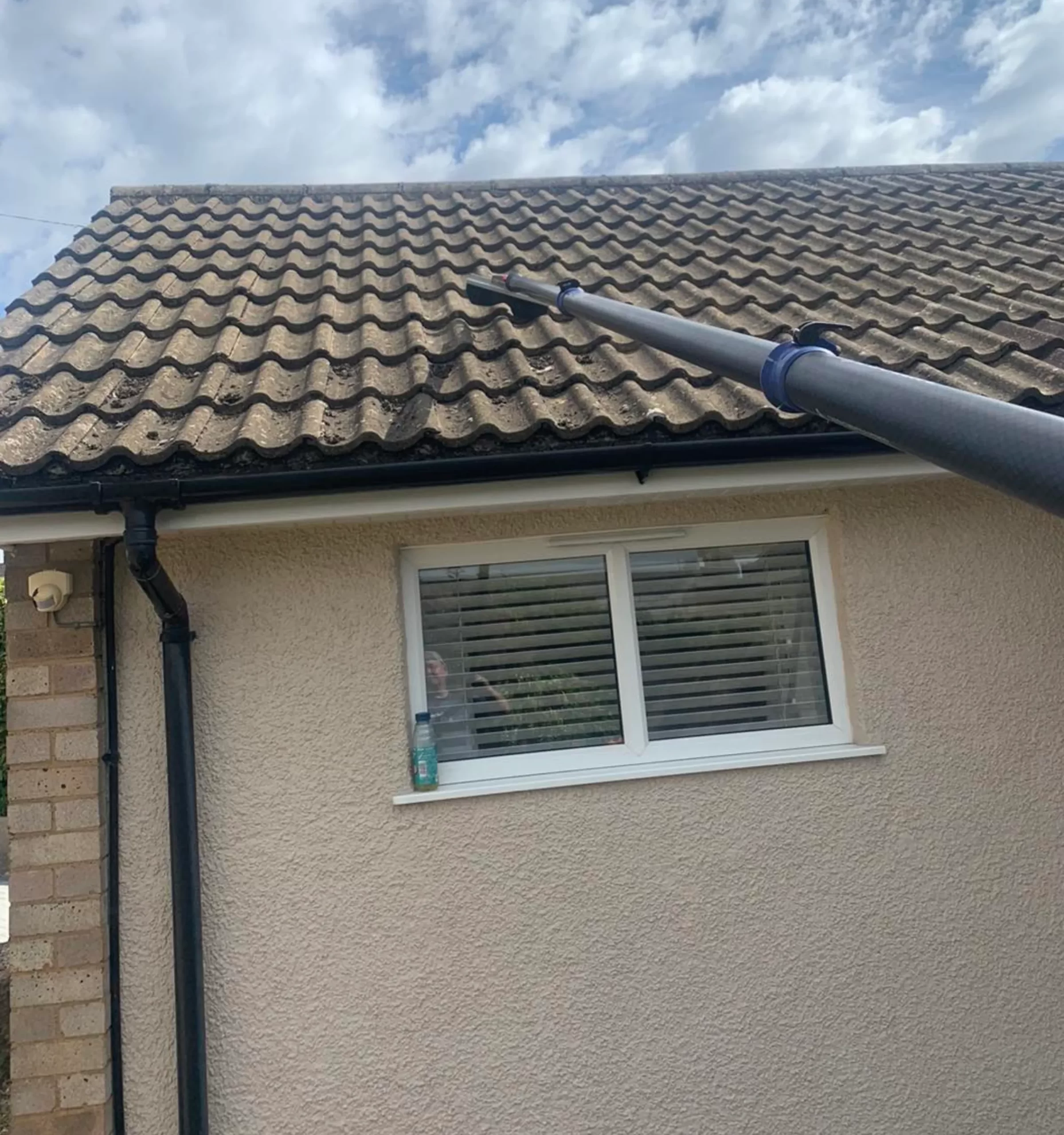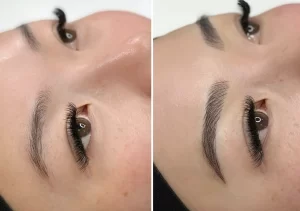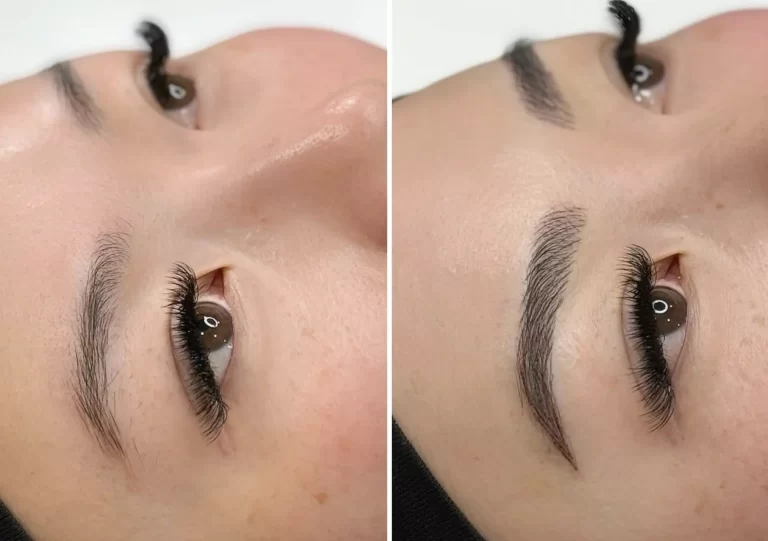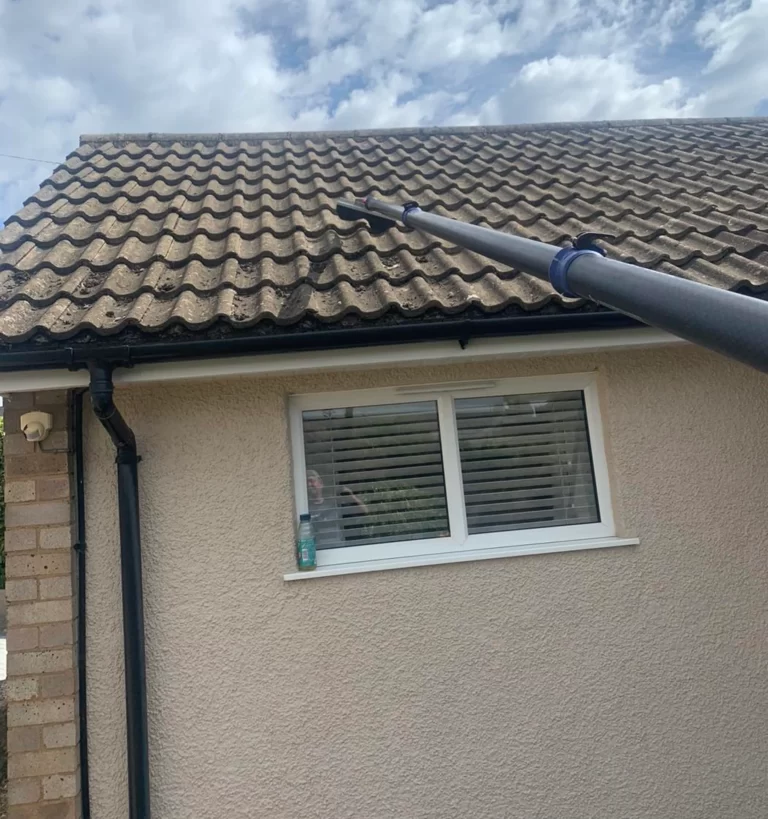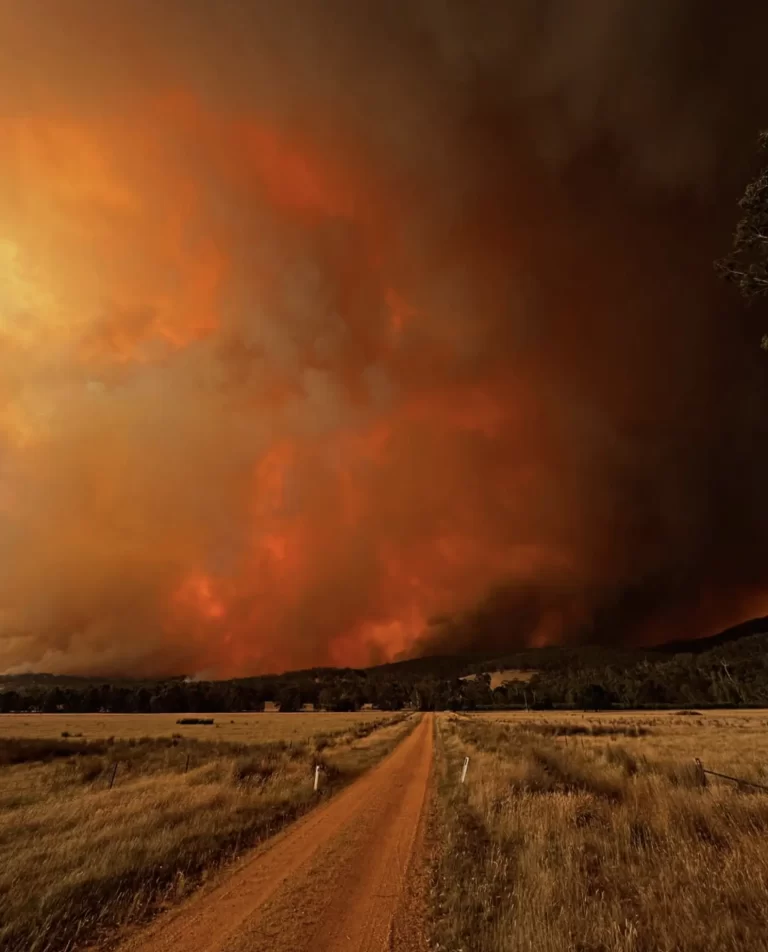A clean roof not only boosts your home’s curb appeal but also extends its life by preventing moss, algae and debris buildup. However, not all roof cleaning methods are created equal. Choosing the right one depends on your roof material, level of dirt or organic growth and safety precautions. Let’s look at the most common methods of roof cleaning and which one is right for you.
Types of Roofs and Cleaning Needs
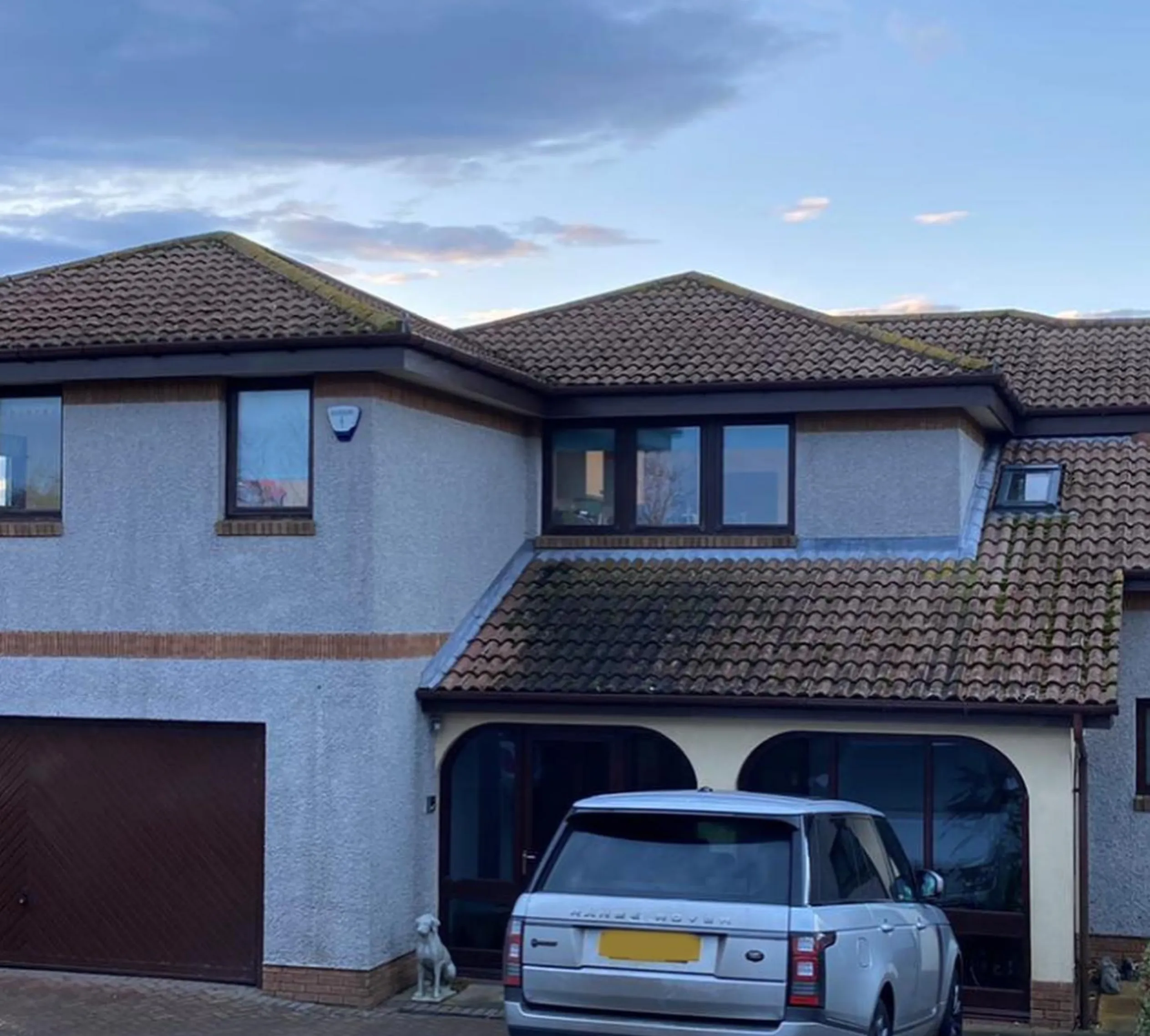
There are different types of roofs and each needs a specific roof cleaning method. The most common roof types are:
- Asphalt shingles: Soft washing only.
- Concrete roofs and concrete tile roofs: Pressure washing but with safety precautions.
- Metal roofing: Low-pressure water only.
- Terracotta roofs: Organic growth prone and require gentle methods like Soft washing roof cleaning.
- Tiled roofs: These can be cleaned with special cleaning solutions and manual cleaning.
1. Soft Washing
Soft washing is a low-pressure water delivery cleaning method that uses a combination of biodegradable chemical solutions and water to remove dirt, algae, mould growth and mildew from the roof surface. It’s the preferred method for delicate roofing materials like asphalt shingles as it prevents granule loss and structural damage.
Pros:
- Safe for most roofing materials including delicate roofs.
- Kills moss growth, algae and mildew.
- Long-term protection against organic debris and future growth.
- Uses special cleaning solutions and clean water.
Cons:
- Requires special equipment and professional roof cleaners.
- It may take days or weeks for full results as chemical action breaks down contaminants.
2. Pressure Washing
Roof pressure washing or power washing uses high-pressure water to remove dirt, tough stains and debris from the roof surface. This method is best for durable roofing materials like metal roofing, concrete tiles or slate.
Pros:
- Fast and effective for tough stains and dirt accumulation.
- Works on hard surfaces like concrete roofs and commercial roofs.
- Immediate visible results.
Cons:
- Too much pressure can damage the roof causing loose shingles and roof leaks.
- Can void warranties on roofing components.
- Doesn’t prevent organic re-growth of moss, algae or lichen so future costly repairs.
3. Manual Cleaning
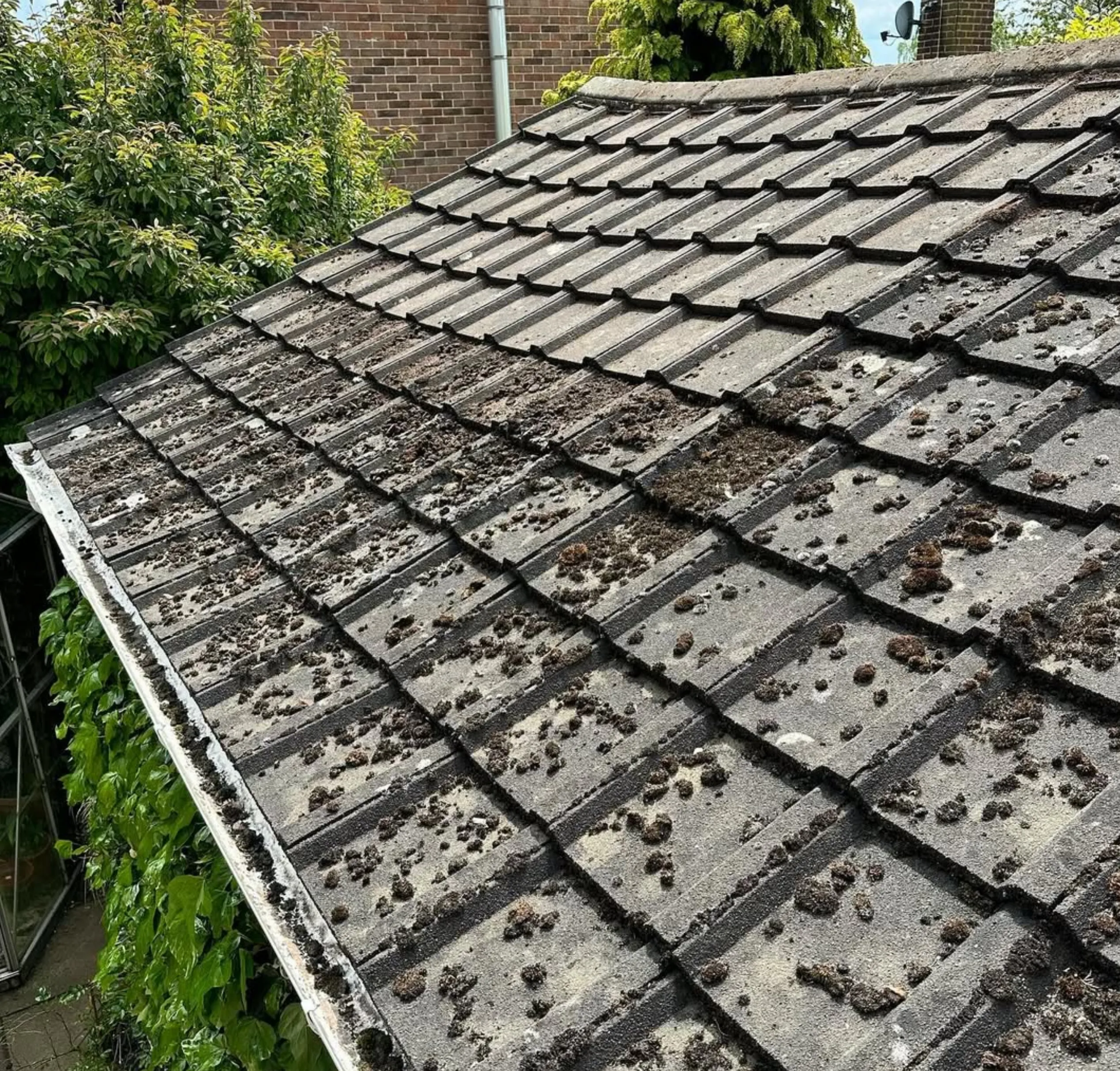
For roofs with heavy moss growth or debris build-up, manual cleaning with a soft-bristled brush, plastic scoop or air blower can be a good cleaning method before applying a cleaning solution.
Pros:
- Precise cleaning, less risk of damage.
- It can be done with soft washing.
- No harsh chemicals.
Cons:
- Takes time and effort.
- It can damage if not done right.
4. Chemical Roof Cleaning
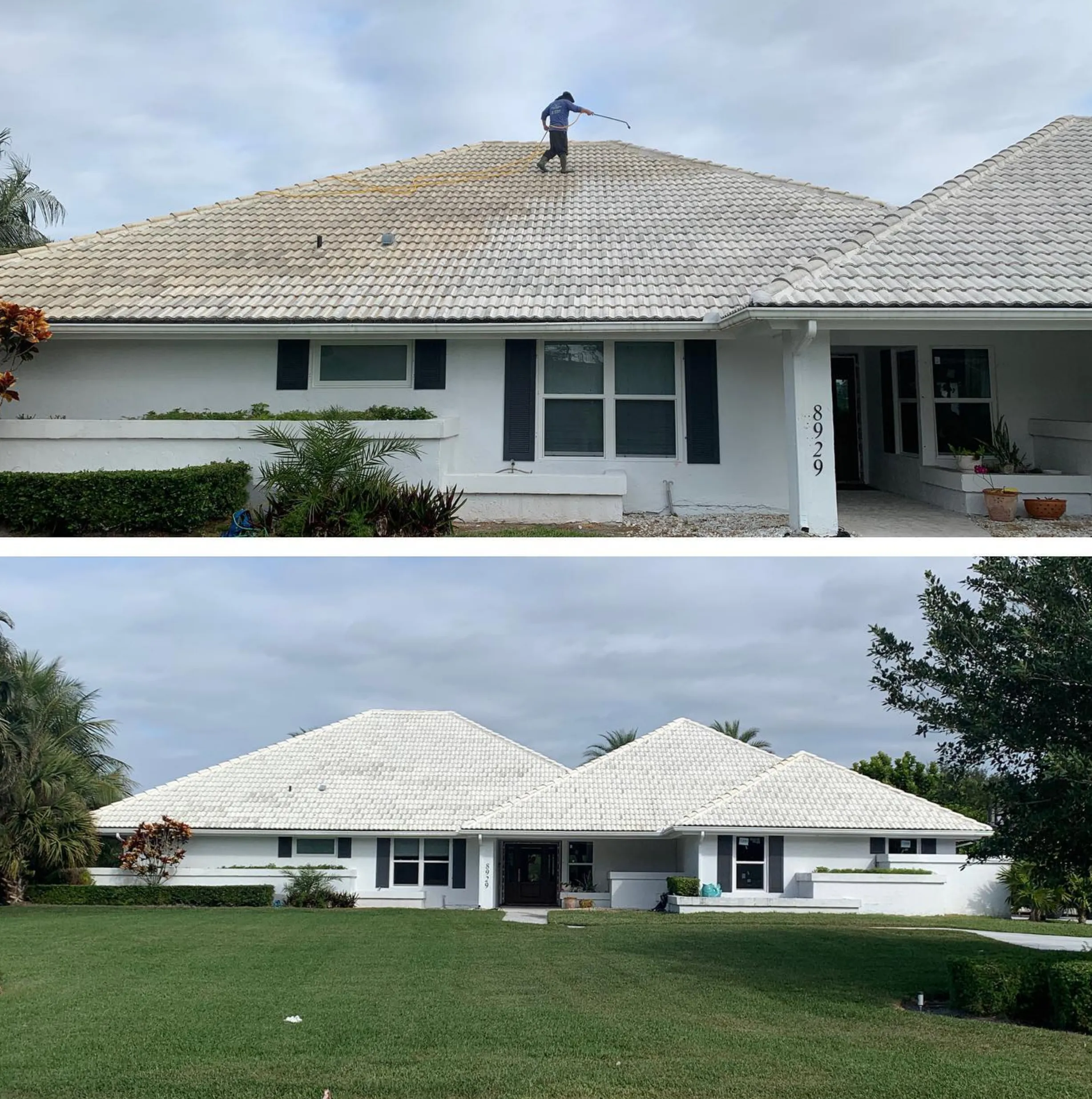
Some roof cleaners use chemical treatments to dissolve moss, plant matter and organic debris. These can include chlorine bleach or other roof-cleaning solutions.
Pros:
- Great for microbial growth and organic matter.
- Long-term protection for a well-maintained roof.
- Low water usage so great for areas with high sun and weather.
Cons:
- It can contain toxic and harmful substances to plants and animals.
- Requires safety protocols, gear and expertise.
Save Money and Prevent Damage
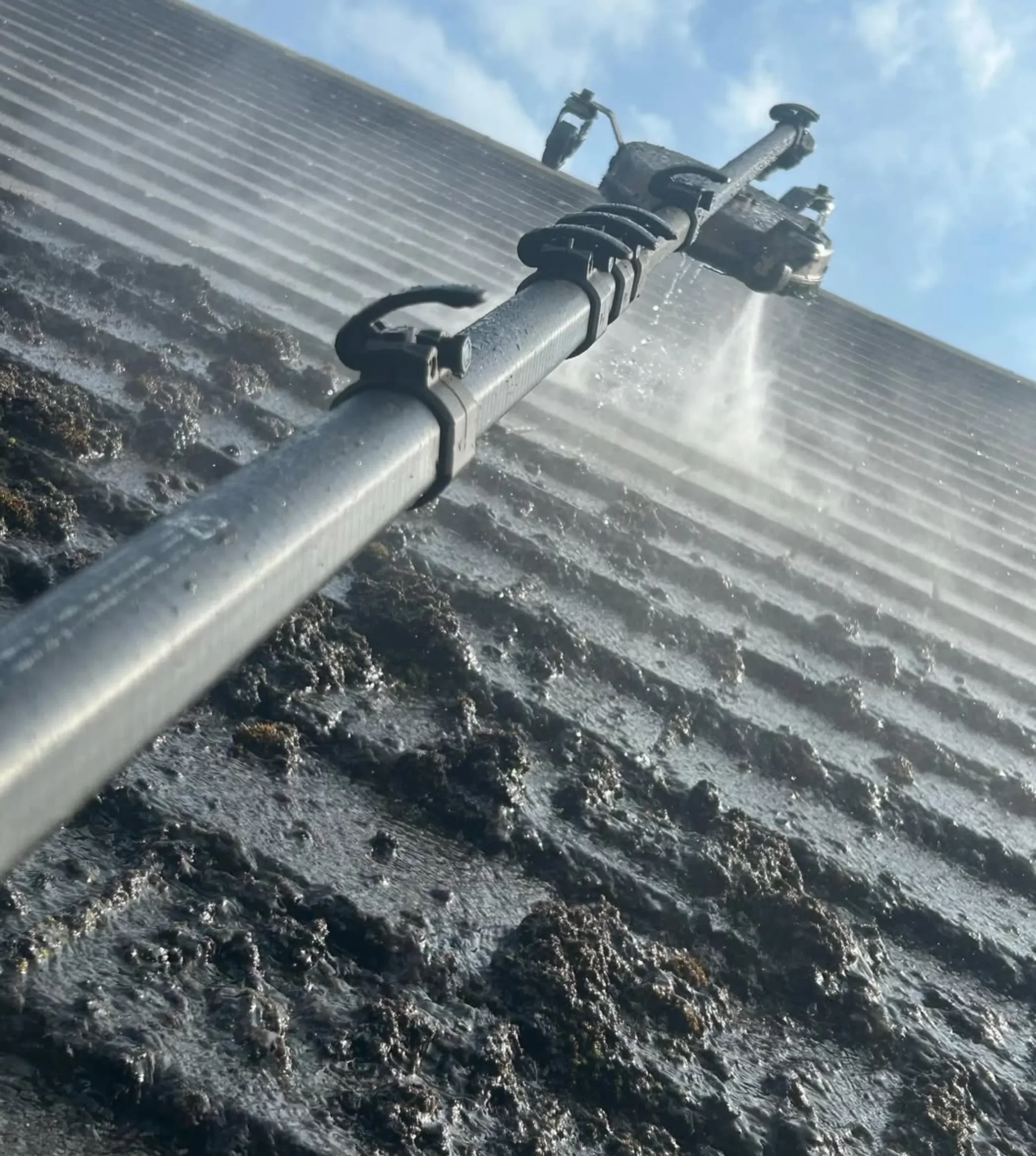
Regular maintenance of a roof over time saves extensive damage and costly repairs. Common types of damage include:
- Loose tiles: From pressure washing or weather.
- Water damage: From improper cleaning methods and clogged gutters.
- Organic debris accumulation: Creates a moss-friendly environment.
- Slippery spots: Increases risk of injury during manual cleaning.
The Best Way to Clean
For most residential roofs soft washing is the way to go. It’s gentle, effective and prevents future biological growth. For tough stains or commercial roofs with metal or concrete tile roofing pressure washing can be useful but must be done carefully to avoid damage. If you have a lot of moss build-up a combination of manual cleaning and soft washing may be the best option.
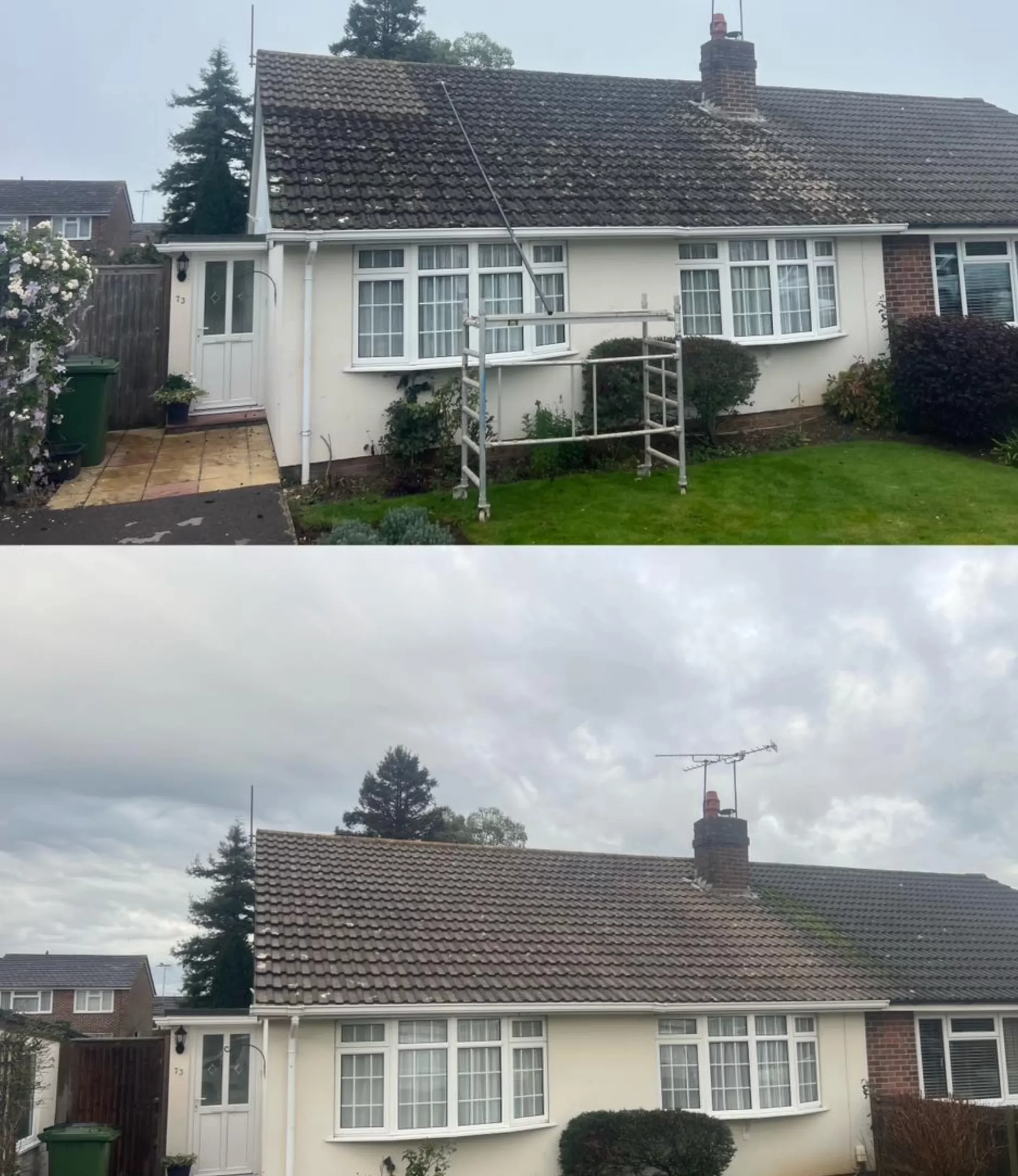
Get a professional to do the job and it will be done safely and effectively and save you from costly damage to your roof over time and keep it in top condition. When looking for roof cleaning services look for professionals who specialise in soft washing, roof cleaning, house washing, soft wash roof cleaning and solar panel cleaning so you get the best results.
Contact us today to book your roof cleaning job!
FAQ
How often should I get my roof cleaned?
It depends on your roofing material and the weather. Generally you should get your roof cleaned every 1-3 years to prevent organic debris buildup and roof leaks.
Can I do it myself?
While you can do it manually, it’s not safe and not as effective. Using the wrong pressure, the concentration of chemicals or cleaning methods can cause costly damage. Let the roofing experts do the job.
Will roof cleaning damage my shingles?
If done incorrectly high-pressure washers can damage your roof. A professional using soft washing is the safest and most effective way to clean asphalt shingle roofs.
Does roof cleaning help with energy efficiency?
Yes! A clean roof reflects more sunlight, keeps your home cooler and reduces energy bills, especially for Australian homes that get harsh sunlight.
How much does professional roof cleaning cost?
The cost of roof cleaning varies depending on the roofing situation, roof decking, roof tiles and level of cleaning required. On average professional roofing contractors charge between $250 and $800 per square metre depending on the cleaning method and service providers.
However, not all roof cleaning methods are created equal.
